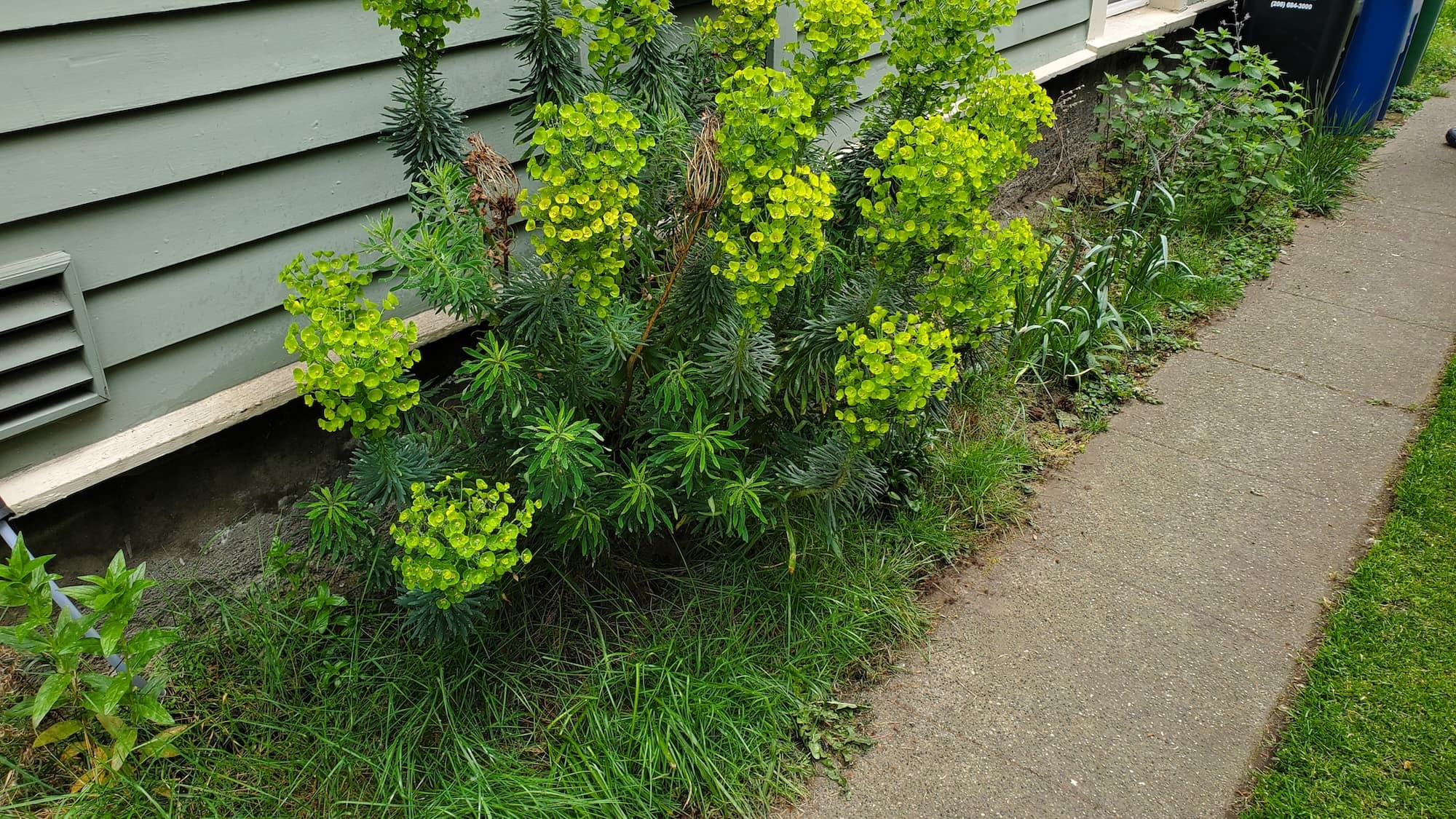Weeding Clear weeds around power poles
Homeowner’s Issue
Weeding’s coastal, maritime climate brings frequent rain, mild winters, and brief summer sun—conditions that favor fast-growing weeds, moss, English ivy, and blackberry runners. Soils here tend toward compacted loams with pockets of clay on slopes, which can hold water and cause poor drainage around utility poles and easements. South- and west-facing spots get more sun and dry out faster, while north-side and shaded yards near canopy trees often foster moss and persistent shade-tolerant weeds.
Sloped yards and alleys in neighborhoods near Discovery Park or Beacon Hill often see erosion and runoff that encourage weed re-establishment. HOA rules and narrow right-of-way access around poles mean work must be tidy, low-impact, and compliant with local codes. For homeowners, problems include messy sightlines, tripping hazards, and roots that undermine pole bases or nearby hardscape. Effective solutions in Weeding need to prioritize turf and soil health, improved drainage, and low-maintenance groundcover options to reduce repeat visits while keeping the area safe and visually tidy.
Our Quality Service
We focus on sustainable, manual methods: targeted hand-pulling, cutting back invasive runners, and improving soil surface with mulch to suppress future growth. We assess drainage near poles and recommend small grading or gravel drip-lines where needed to divert water from bases. Our team uses organic soil amendments and low-impact tactics to reduce regrowth and protect surrounding plants.
Benefits:
- Safer access around utility poles and clearer sightlines.
- Improved curb appeal with neat edges and mulch mats.
- Lower long-term maintenance through erosion-aware solutions.
- Pet- and child-safe methods with no synthetic herbicides.
Local insights
We account for frequent spring rains and shady microclimates common in Weeding, choosing materials and schedules that avoid working in saturated soil to prevent compaction and further erosion.
What’s Included
- Initial site assessment and weed identification.
- Hand-weeding and root removal around the pole and immediate radius.
- Light pruning of encroaching vegetation and ivy.
- Cleanup and responsible disposal (haul-away or green bin).
- Optional mulch application to suppress regrowth.
Options / Upgrades:
- Mulch + landscape fabric installation for long-term suppression.
- Organic weed-control soil amendments and compost top-dressing.
- Gravel or permeable edging to improve drainage on slopes.
- Planting low-maintenance native groundcovers to replace problem weeds.
Before & After / Expectations
Expect some noise from hand tools and brush cutting during the visit, and temporary debris while we work. We’ll keep access clear and sweep/haul clippings away or leave them in your green bin per your preference. Work is scheduled to avoid heavy rain when possible to protect soils.
Care tips for Weeding yards:
- Apply 2–3 inches of mulch annually to choke new weeds.
- Pull young weeds after the first rains before they seed.
- Trim ivy and runners at the root line to prevent re-sprouting.
- Address compacted spots with aeration and organic top-dress.
FAQs
How long does a typical pole clearing take?
Small jobs often take 30–90 minutes; larger or overgrown sites may need longer or a two-step visit.Do you use chemicals?
No. We use only manual, mechanical, and organic methods—no synthetic herbicides.What about disposal?
We can haul away debris or place clippings in your green bin, whichever you prefer.Will you fix drainage issues?
We provide small-scale drainage improvements (gravel, grading, mulch rings) and advise on larger fixes if needed.
Call to Action
Weeding homeowners: schedule a free estimate for fast, local, sustainable weed clearing around power poles. We offer quick scheduling, dependable results, and Seattle-area experience tailored to local soils and slopes. Contact neatandtidyseattle@gmail.com to book a consultation and keep your yard safe, tidy, and low-maintenance.










